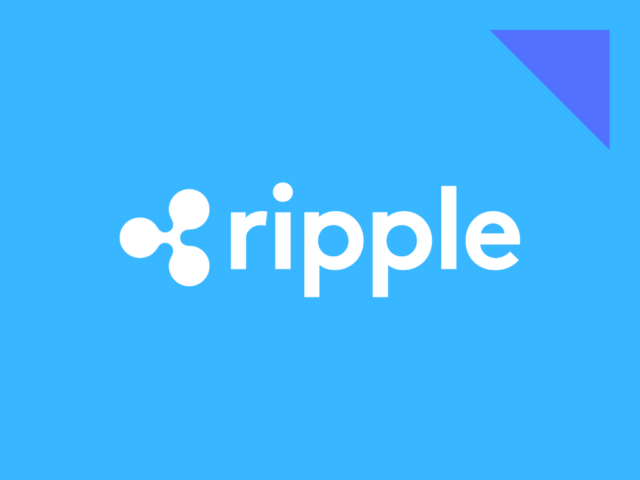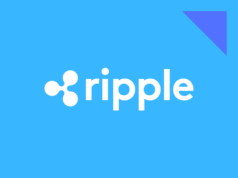Ron Hammond joins Ripple following a 5+ year career in politics, in which he progressed from state level campaign management positions through to a central government role serving under Representative Warren Davidson as a ‘Legislative Assistant’.
Top News
Welcome to the latest bi-weekly roundup of the most discussion-worthy news content related to Ripple’s blockchain network and cryptocurrency XRP, in addition to a brief look at periodical price movements.
September 3rd
Civil Servant Behind ‘Token Taxonomy Act’ Joins Ripple

Ron William Hammond has been been recruited for the role of ‘Manager of Government Relations’ at Ripple, which he announced himself via Twitter on September 3rd, 2019.
The news was confirmed shortly thereafter, when the company’s Global Head of Government Relations, Michelle Bond, congratulated her new team member via LinkedIn.
“Ron brings a wealth of legislative and policy experience — excited to have him on board as we continue to work closely with lawmakers, regulators, and partners worldwide!”

Prior to working for Ripple, from state level campaign management positions through to a central government role serving under Representative Warren Davidson as a ‘Legislative Assistant’, Ron Hammond worked as part of the team responsible for drafting the first and second versions of the ‘Token Taxonomy Act’ in late 2018 and April 2019, respectively.
This groundbreaking bill proposed amongst other things: an amendment of the Securities Act (1933) and Securities Exchange Act (1934) so that digital tokens would no longer be classified as a ‘security’. Which has previously been a common yet abstract cause for federal litigation.
By removing this definition, exchanges would have a greater level of freedom for operation in the United States – as well as those operating token sales / fundraising, and servicing tokens that have speculative value (like an asset) rather than purely utilitarian.
The news comes just over a month after the publication of the open letter penned by Brad Garlinghouse (CEO, Ripple), which he addressed to congress. The letter came in light of recent action – with more and more tokens being classified as ‘securities’ everyday, with massive consequences to those affected.
August 29th
Brad Garlinghouse Latest Tweets Cause Controversy

As we know from the July 2019 open letter to congress: Brad Garlinghouse is not shy when it comes to addressing concerns and criticisms about his network and platform.
Garlinghouse took to Twitter recently posting a series of messages defending Ripple and XRP against prevailing rumours and speculation.
His words and decision to publish them adds credence to the suggestion that Ripple perceives itself as being somewhat besieged with FUD. Not just from government legislators, but from members of the community and professional media.
On August 27th, 2019 Brad Garlinghouse tweeted
“I’m always struck by the questionable sources (i’m being generous here) spreading FUD about #XRP and @Ripple. Even more so over the last few weeks (Ripple’s XRP sales, litigation etc)…. thus, I feel compelled to comment”
Prefacing that he cannot get into details (due to an ongoing class action lawsuit in which he is a named defendant), Garlinghouse continues to explain that his main issue is with the prevailing criticisms the performance and value of the XRP token, reminding anybody reading that token sales had recently decreased intentionally.
This was done to combat data inconsistencies regarding volume and market capitalisation, however Garlinghouse points out that it also resulted in a decrease in the XRP inflation rate – making it “lower than that of BTC and ETH.”.
He closed his statements by proclaiming that Ripple is establishing the bar for standards in reporting and transparency within cryptocurrency – citing its periodical market reports.
Few in the replies were convinced, with twitter user @ChainLinkGod posting a set of images and saying:
“Good job on manipulating the facts Brad! I’m sure the retail bagholders will eat it right up and you’ll be able to continue dumping $XRP as usual.”
@Martyn_Lockheart is another community critic who spoke up on the performance issues, stating
“I agree with what you are saying but as a big $XRP holder myself if feels like fighting an impossible tide of selling. XRP is the worst performing crypto of 2019. You could easily stop 99% of these class actions by saying no more sales under say $1 then everyone wins? @Ripple”
On the other hand @digitalassetbuy supported Garlinghouse’s claims of victimhood versus parts of the mainstream media by directly referencing an article posted by Forbes
August 20th
“Santander bank using Ripple’s xCurrent solution for upcoming remittance service in Latin America”
Santander is reportedly working on a “payment corridor” between Latin America and the USA. The news comes after reports earlier in the year concerning the high profitability of Latin America for Santander, and shows that the bank has been quick to follow up on these observations.
While the bank would not reveal how many Latin American countries it plans to connect to the corridor, Santander serves Argentina, Brazil, Uruguay, Chile and Mexico.
This follows similar news from back when the service started in July 2019 regarding the opening of a corridor for payments between the UK and Poland. It is clear to see that there is a high level of profitability in the provision of international remittance between such regions which have close proximity – as well as heritage of cultural and economic exchange (in both scenarios).
One Pay FX does not use XRP, however it does use the Ripple network to enable instant cross-currency and cross-border remittance for free to its users.
In an exclusive statement delivered to CoinDesk, Cedric Menager (CEO of One Pay FX) said
“Customers who were not doing international transfers are now using the service, customers who were using international transfer are now doing it more, and customers who had gone to use fintech competition have come back because of the One Pay offering,”
“The international payment experience in the Latin American markets is even less evolved than in the European markets… There are even parts of the Latin American market where it’s almost impossible to do an online international payment.”
Price Movements


Information correct as of 01:52 AM, 6th August 2019



